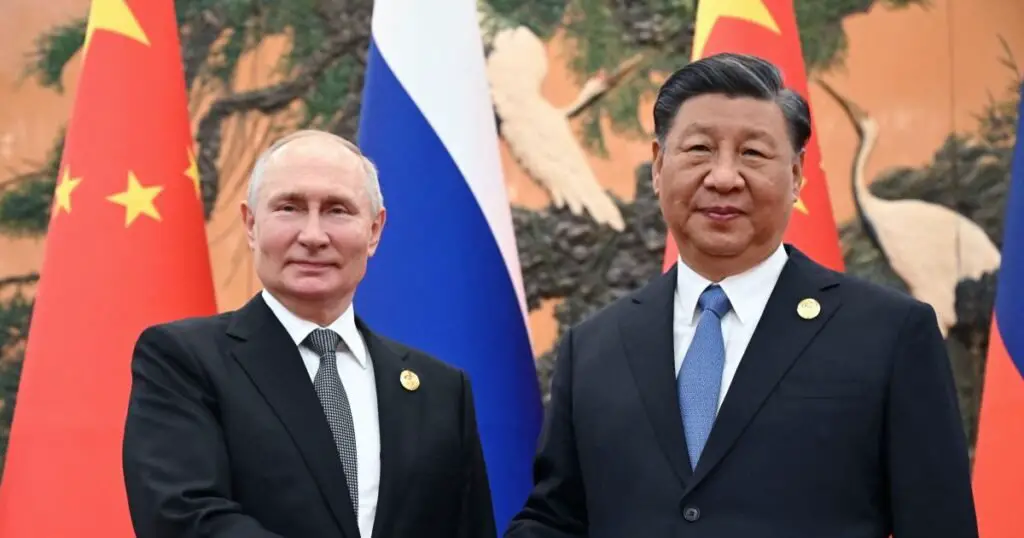China continues its nuclear expansion, strengthens its ties with Russia and has increased military pressure against Taiwan over the past year, according to a new Defense Department report examining actions that accelerate key areas of conflict with the United States
The report released Wednesday also said the recent wave of corruption allegations within China’s powerful Central Military Commission, which oversees the People’s Liberation Army, is hurting Beijing’s military growth and could slow its modernization campaign.
A senior defense official said China has made progress on some of its programs but has fallen behind on others.
The official, who spoke on condition of anonymity to describe the U.S. assessment, warned that Beijing is working to develop a more diverse and technologically sophisticated nuclear force. As the expected number of nuclear warheads continues to increase, China is expanding its targeting capabilities.
Beijing will be able to attack more and different types of targets, inflict greater damage and have more options for multiple rounds of counterattacks, the official said. The US is calling on China to be more transparent about its nuclear program while warning that America will defend its allies and take appropriate countermeasures.
According to the report, which provides the U.S.’s annual assessment of China’s military power and is required by Congress, China had over 600 operational nuclear warheads by mid-2024, and the Pentagon expects there will be more than 1,000 by 2030. The Pentagon’s estimate China’s current stockpile of nuclear warheads is about 100 higher than stated in last year’s report, but that is reflected in the change in estimate, not the speed of production.
The Biden administration has worked to maintain balance with China by expanding the U.S. military presence in the Asia-Pacific region to counter Beijing while encouraging increased communication between the two countries at the diplomatic and military levels.
This increase in talks has been accompanied by a decrease in forced and risky interceptions of US aircraft since the end of 2023 compared to the previous two years. However, China still operates flights close to American and allied forces in the region, which the US military considers “unsafe.”
The Pentagon’s national defense strategy is based on the assessment that China represents the greatest security challenge to the United States and that the threat from Beijing influences how the US military is equipped and organized for the future.
Corruption within the PLA has led to the ouster of at least 15 senior officials, leading to a major shakeup in China’s defense apparatus.
“This wave of corruption affects all PLA services and may have undermined Beijing’s confidence,” the report said.
In June, China announced that former defense minister Li Shangfu and his predecessor Wei Fenghe had been expelled from the ruling Communist Party and accused of corruption. According to the Chinese Defense Ministry, another senior official, Miao Hua, was suspended last month and an investigation was launched.
The US report points to a continued increased Chinese military presence around Taiwan, the self-governing island that China claims as its own. It said the Chinese navy had been in the region more frequently and that there had been increased incursions into the island’s air defense identification zone and major military exercises in the area.
Just last week, a large deployment of Chinese naval and coast guard ships in the waters around Taiwan raised alarm as Taiwanese officials said it looked like China was simulating a blockade. Officials said up to 90 ships were involved in what Taiwan described as two walls designed to show the waters belonged to China.
Taiwan seceded from communist China in 1949, rejecting Beijing’s demands to accept unification. China says it will do so by force if necessary, and leaders have said they want to be ready to do so by 2027.
The United States is required by domestic law to help defend Taiwan and provide it with weapons and technology to deter an invasion.
Island democracy has been the main source of tension between Washington and Beijing for decades and is widely seen as the most likely trigger for a potentially catastrophic war between the US and China.
More broadly, the report concluded that the PLA continued its efforts to develop greater military capabilities but made “uneven progress toward its 2027 modernization milestone.”
One area of expansion, the report said, is unmanned aircraft systems, which officials say are “rapidly approaching U.S. standards.”
Regarding Russia, the report said China supported it Russia’s war against Ukraine and sold dual-use goods to Russia, on which Moscow’s military industry relies. Dual-use items can be used for both civilian and military purposes.
contributed to this report.





